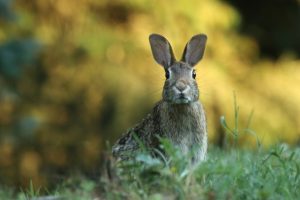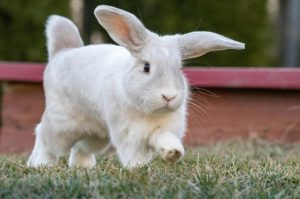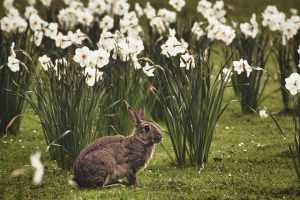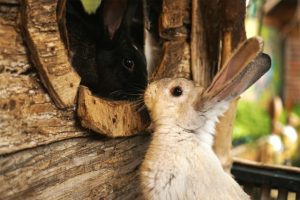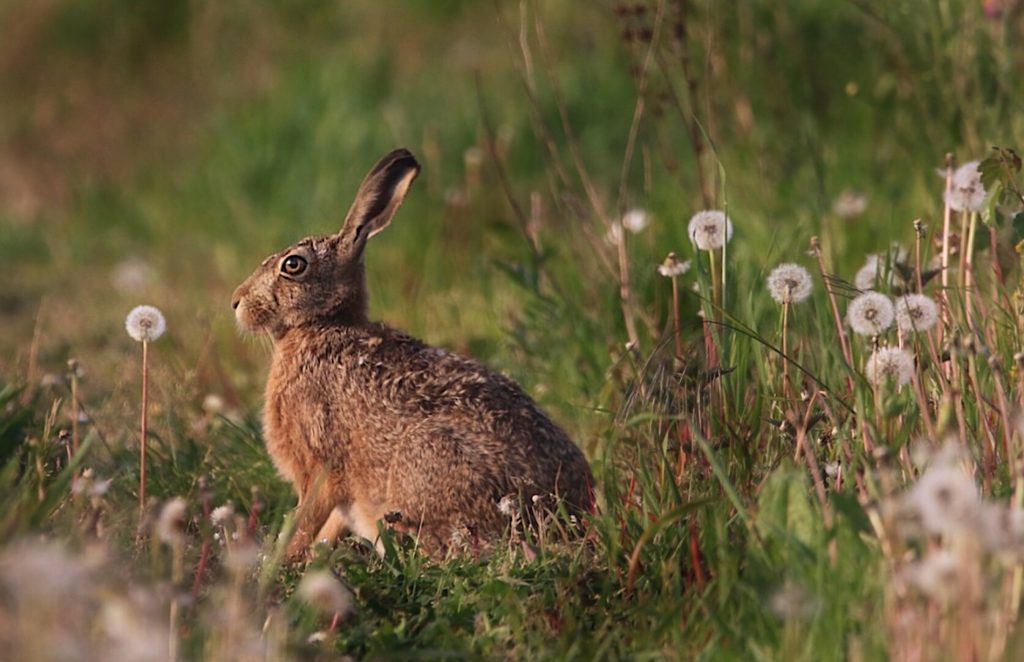
Winter, to say the least, is quite miserable in some parts of the world. As humans, we complain and add to the layers of clothing that we are already wearing. Worrying about the wildlife in our yards or fields is not one of those thoughts on the top of our brains.
All of that wildlife is quite capable of staying warm through those snowy and cold winter months, yet, we can’t help but wonder how they do it. Especially those small little wild rabbits! Their size does not allow for much ‘insulation’ so to speak.
Well, rest assured that even the small wild rabbit is able to protect itself and manage to stay warm enough to survive even the harshest of cold winters, such as in Canada or the Midwest in the United States. In these areas, the temp can go extremely low, as in double digits below zero. That is extreme for a human, just imagine those small wild animals and how they feel.
Science
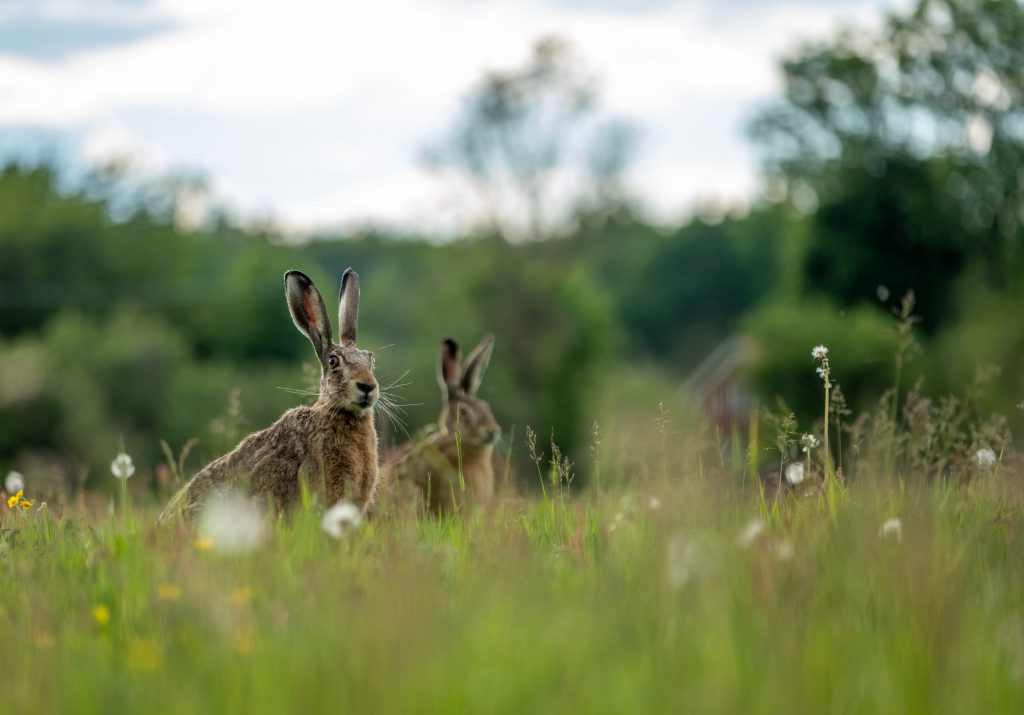
If it helps, Science tells us that wild rabbits actually survive quite well throughout the winter months. This is due to the fact that beginning in the fall, the wild rabbit will stop shedding the fur it has and begin to grow a nice thick coat of fur to sustain it through those cold temps. A wild rabbit actually does very well in temps that sink to 32 degrees.
Rabbits are actually pretty tough and sturdy animals, some would theoretically state that most rabbits are happier when the weather is cold versus the hot weather and high temps.
The average body temperature of a wild rabbit runs between 101* and 103*. These wild rabbits are able to hold that body temperature to the 32* temperature and some can sustain it in even lower temperatures than 32*.
Shelter
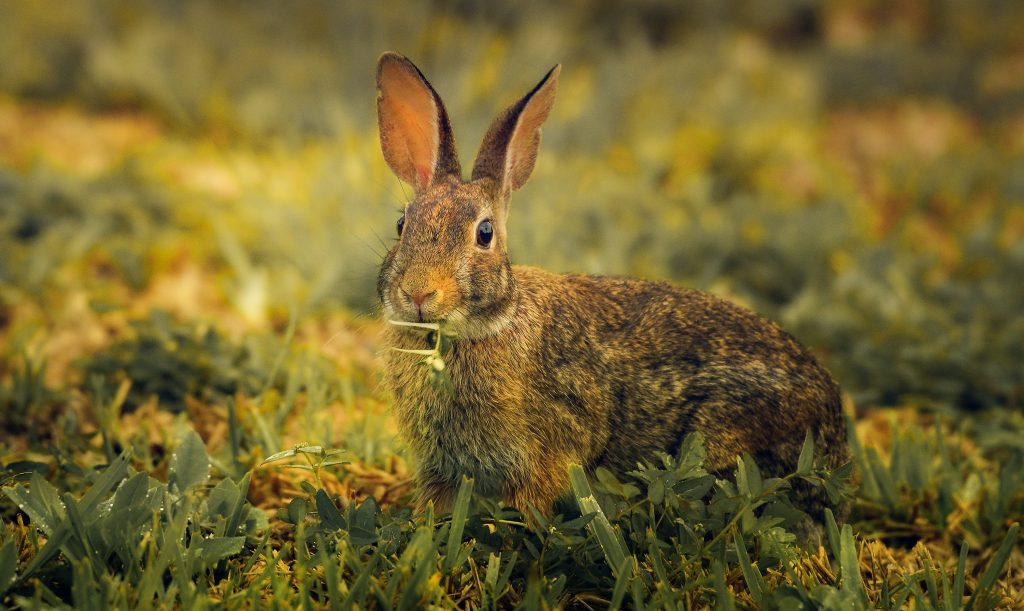
Temperatures, whether they are too high or too low, can be and are dangerous to all animals. When a rabbit is beginning to feel the effects of the heat or the cold, they will generally seek shelter underground.
Rabbits are also quite intelligent and have prepared a nice set of living arrangements for themselves and the weather they live in. These underground shelters have been lined with straw, grass and even twigs that they have found. All this acts as an insulation for the rabbit.
Most rabbits will have more than one underground shelter, for safety sake. A wild rabbit will generally reside within a 5-mile radius, and seldom, if at all, travel any further than that distance.
Food
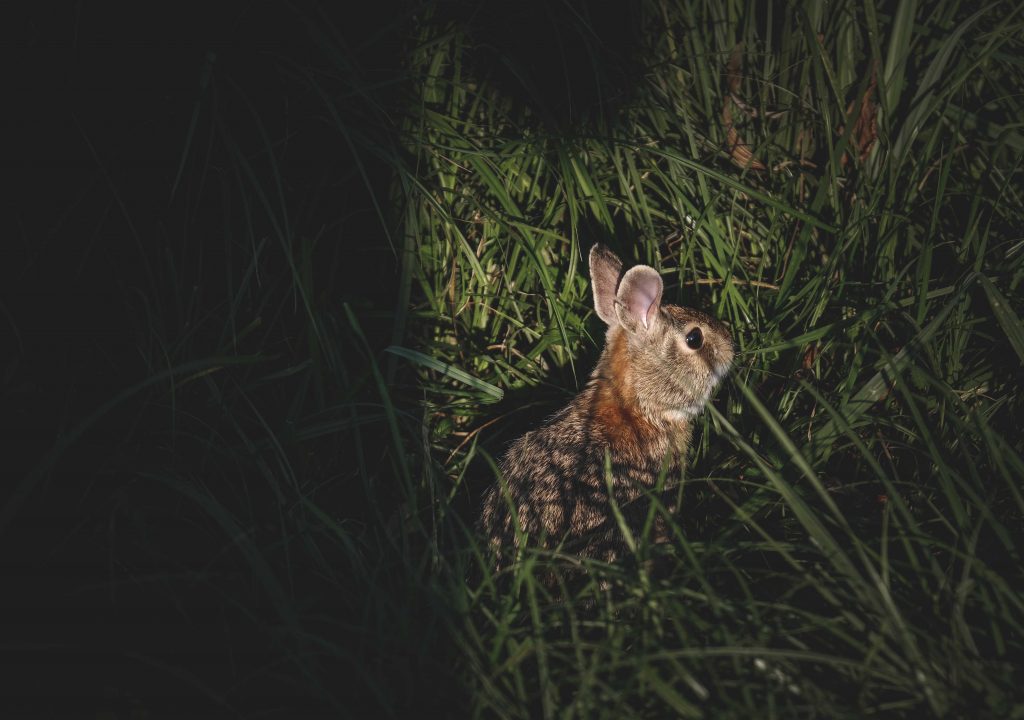
During the winter, food can be difficult for a wild rabbit to find. During these times, they will eat twigs, conifer needles and even tree bark. Since they do not hibernate, they have made a shelter underground and lined it with twigs and grass and straw.
These shelters might be located within a wood pile, a rock pile, hollow logs or even brush piles. To sustain themselves, wild rabbits do not eat just the grasses and twigs or tree bark, they will also eat insects, moths and snails.
Cacophony is another way the wild rabbit will get the nutrition it needs. A wild rabbit will eat some of its own faeces. The softer faeces pellets are what they will consume. This is due to the fact that there is still nutrition within the faeces, so consuming it once again will enable the rabbit to take in the nutrition from those pellets.
As long as a wild rabbit has enough insulating fat stored on its body, it will survive through the winter.
Adaptation To The Weather
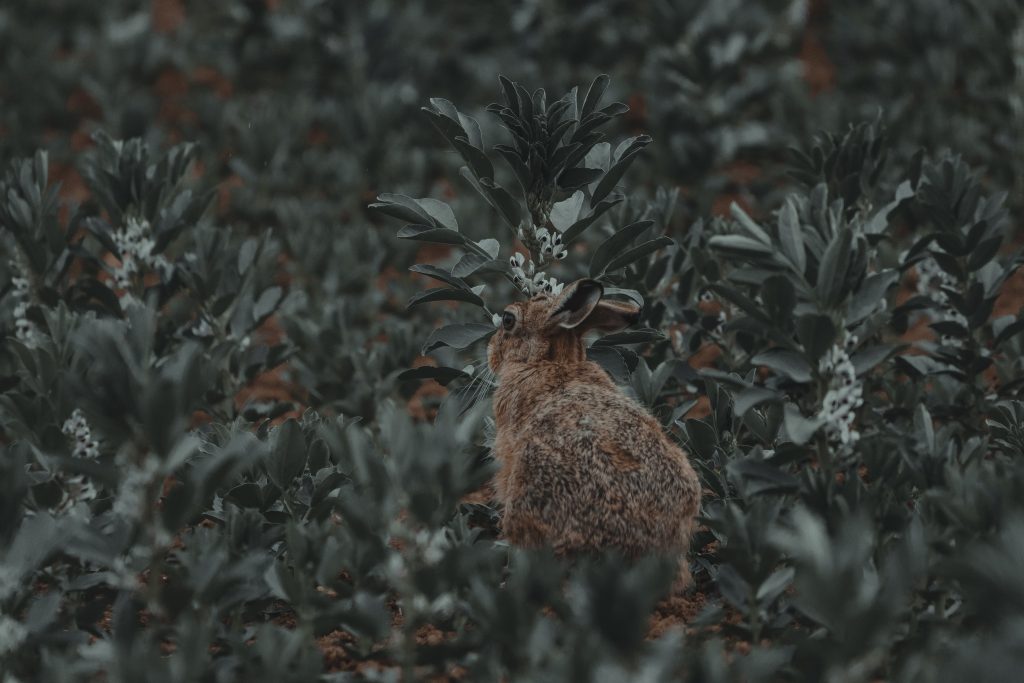
Again, rabbits are quite intelligent animals. Their instincts help them to figure out the ways in which to survive. Some of the methods used when it comes to adapting to the winter months include:
They will switch to a coarser and more wood-based diet. Since rabbits do not hibernate, and they stay within a 5-mile radius generally, they need to adapt their dietary intake to the food items that are available.
They increase the intake of their own faeces to obtain the nutrition and vitamins that still remain within the faeces. This practice, called cacophony, allows them to eat all the nutrition remaining from the foods they had already eaten.
This also provides a food source for the wild rabbit when the food is scarce.
No matter how cold it is, the rabbit will continue to go out and try to find a food source. This will enable them to continue to build the fat layer on their bodies which acts like an insulator. Beginning in the fall, the wild rabbit stops shedding the fur and begins to build up a thick layer of fur to help stay warm throughout the winter.
The wild rabbit does not wait to build a shelter. They burrow underground tunnels and dens and create nests made from grass, straw and twigs. If the nest is large enough, they also have some winter foods they nibble on when absolutely necessary. They will not eat their ‘bed’ unless they have no choice.
Their shelter is not limited to only one location. They will create tunnels that may connect to another opening. This is done so that when they are out searching for food, they may not need to travel as far, and it is also for safety as there are still predators that will be looking for a food source too. To many predators, rabbits make a good meal.
Having multiple openings that lead to their shelters will enable the wild rabbit to get in the shelter faster when there is a predator, who is also looking for food sources. On top of this fact, winter also means there is a lack of vegetation which means that the predators would be able to see the wild rabbit much easier. The wild rabbit is going to search for a shelter of sorts that protects him or her, anything that a predator can not see through will make a great shelter for the wild rabbit.
The wild rabbit will spend the majority of their time resting under shrubs, low-lying vegetation or right in their burrows. Those times you do see wild rabbits in your yard, it is likely to be because they found a food source that is close to a shelter-type location.
The food source could be loose grain that flew from a field, berries that may have fallen from shrubs or leaves and twigs that had fallen and blown under the shrub area. It is safe to remember that wild rabbits will undergo some changes in their diet and behaviour.
Rabbits will not perform any activity unless it is needed throughout the winter. In other words, when they need to search for food.
A rabbit has the ability to somewhat regulate the body temperature with its ears. It must also be remembered that for a rabbit, the fat stores on its body are not to maintain a diet or to give energy for searching for food, those fat stores are there to help maintain a healthy or warmer body temperature.
Do Not Hibernate
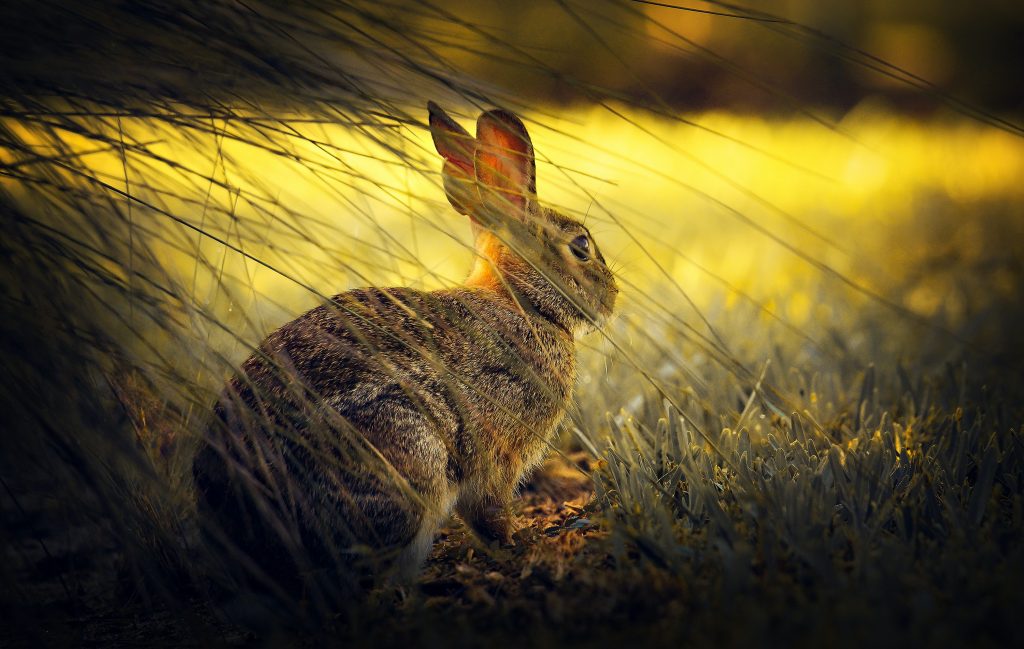
Many animals hibernate during the winter months and this will put their bodies into a dormant state. The wild rabbit does not live this way. Although not considered hibernating, the wild rabbit will still sleep more than it normally would.
The nests that the wild rabbit builds are made with plenty of grass, straw and twigs, which will help to trap the body heat in the nest. Rabbits will sleep up to 8 hours a day, however, this is done in short spurts of 25 to 30 minutes at a time. Since rabbits are vulnerable to the cold drafts, they do build the nest up so that in a manner, the nest will surround their bodies to trap the heat.
During the day, the wild rabbit will sit still and stay in one place which also helps to maintain their body temperatures. The technical manner and wording of how a wild rabbit stays warm in the winter are to stay warm by burning the brown adipose tissues primarily. The brown adipose layers of tissue take less space to hold the same amount of energy as the white fat.
This brown adipose gets its colour from the iron-rich mitochondria. When the brown fat burns, it creates heat. This process is called ‘Thermogenesis’. The rabbit will burn this brown fat throughout the cold weather. When the fat stores are low, the brown adipose tissues continue to produce heat by oxidizing the glucose and the fat from the foods it eats.
Although the wild rabbit is a cold-weather animal by nature, there are certain adaptations that allow the rabbit to survive in temperatures that are even lower than 32*. Rabbits are susceptible to pneumonia, most likely when they are subjected to cold and damp weather conditions. The older rabbits, also prone to pneumonia, need to also be concerned with arthritis.
If the rabbit’s body temp starts to drop below 100*, they are vulnerable and more susceptible to hypothermia. At this point, when the body temps fall below 100*, it is almost impossible for the wild rabbit to maintain or regain the natural ability to regulate the body temperature.
The way to help wild rabbits, if you choose, is to leave piles of grasses, straw, good quality hay and twigs out for the wild rabbit. This will enable them to have a food source, and additional items to build their nests up and help maintain their body temp in the cold winter months.


